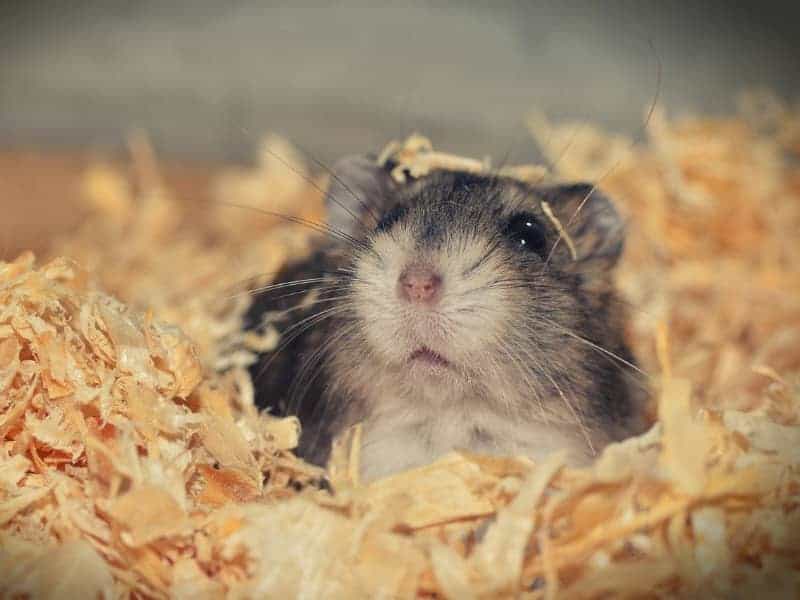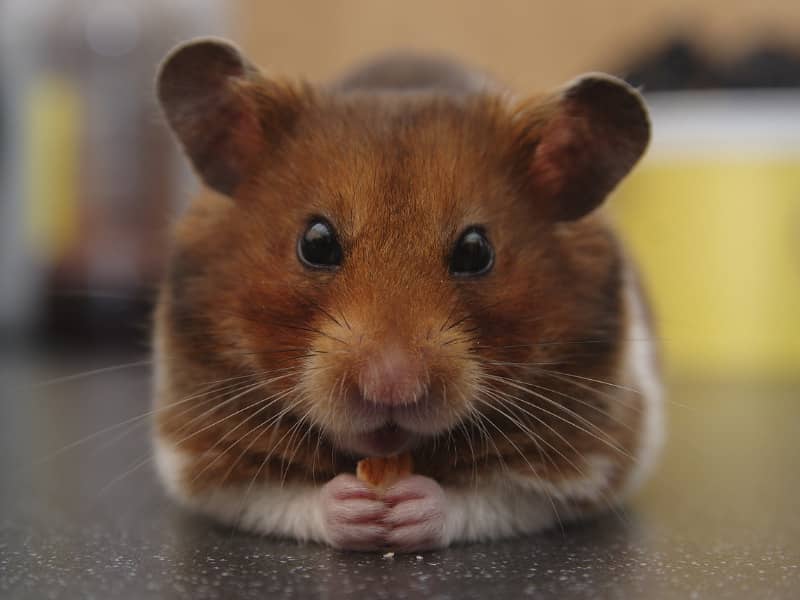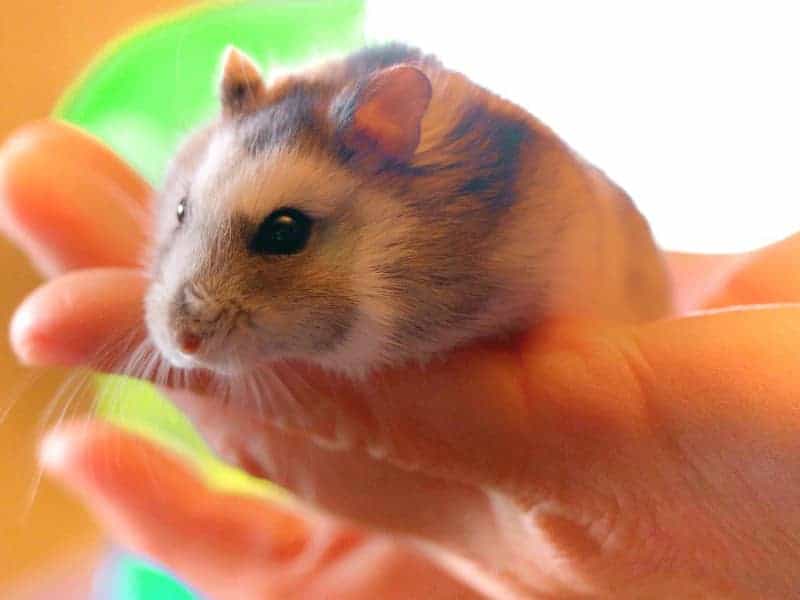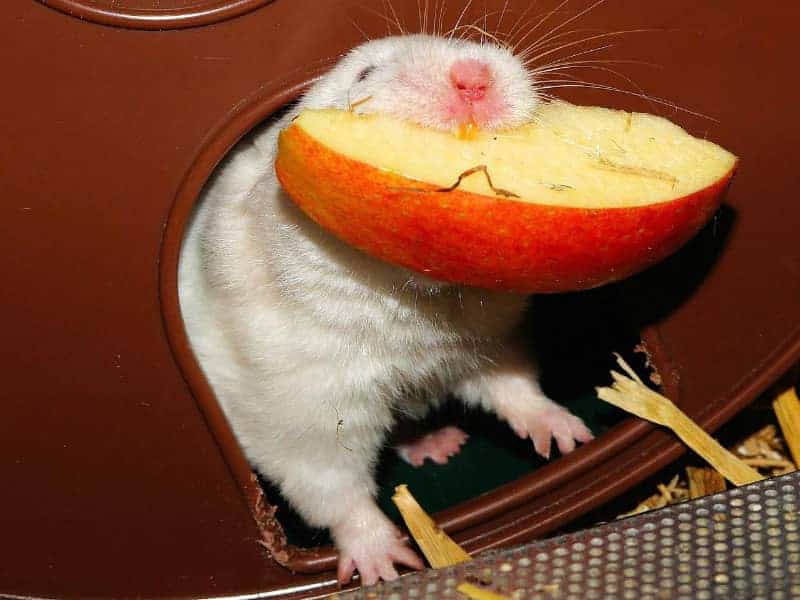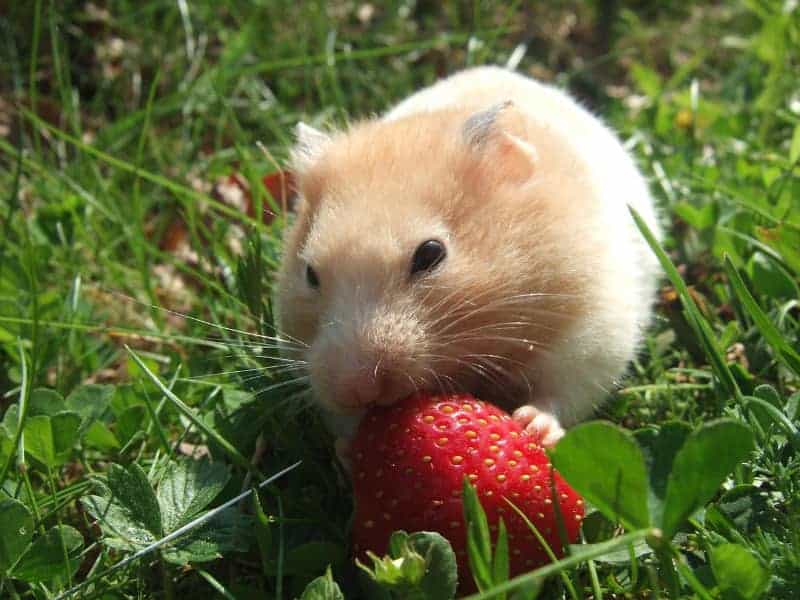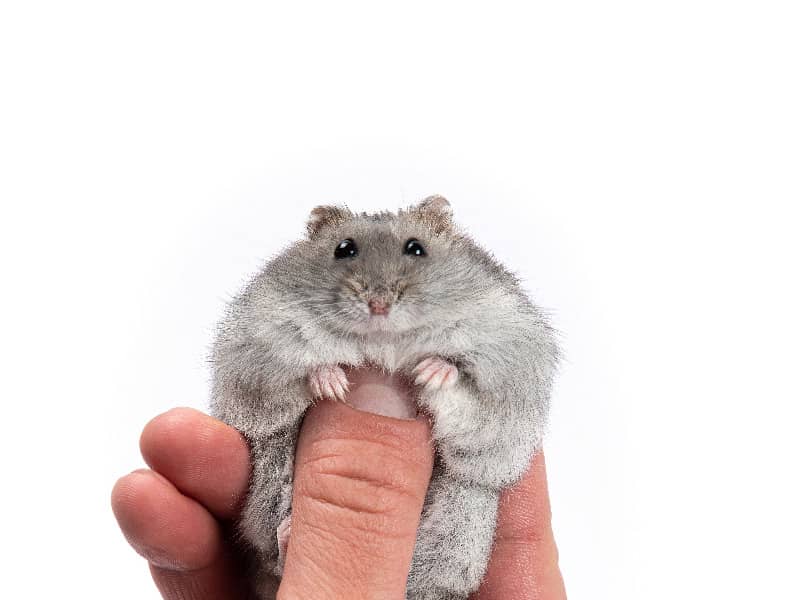
Hamster cheeks
This article is all about the fascinating topic of hamster baking. We will not only look at the biology of these little wonders of nature, but also give practical tips for hamster owners. The article is structured so that by the end you will know exactly about your hamster's baking.
What are hamster cheeks?
Hamster cheeks are the cheek pouches that hamsters have on both sides of their mouths. They are primarily used to store food. Basically, they are like little backpacks for hamsters, except they are built right into the animal's face. They can stretch amazingly far and hold a lot of food.
In the wild, hamsters use their cheek pouches to collect food and later transport it to their burrow. This unique adaptation allows them to efficiently gather food without having to constantly run back and forth between the feeding area and the burrow.
Why is it important to know about hamster cheeks?
If you have a pet hamster or are thinking about getting one, it's important to understand how its cheek pouches work. Knowing the function and care of the hamster's jaws is critical to the animal's well-being.
Even though they look cute, hamster cheeks can be subject to various diseases and problems. Therefore, it is important to both recognize the signs of potential problems and take preventative measures. The information in this blog post can help you ensure the health of your little friend.
Anatomy of the hamster cheeks
Hamster cheek anatomy is a fascinating field that is not only interesting, but also important for understanding the lifestyle and health of these small animals.
Structure of the cheek pouches
Hamsters' cheek pouches are more than simple bags for storing food. They are made of a special muscle tissue that can be stretched very far. The pockets extend from the mouth area to the animal's shoulders.
The inside of the cheek pouches is lined with a mucous membrane that protects the stored food from drying out. The tissues of the cheek pouches are well supplied with blood to allow rapid healing of possible injuries. Some hamster species even have small glands in the cheek pouches that produce antibacterial substances.
Function and importance in the digestive system
Although it may seem that the cheek pouches are only for storage, they also have an important role in the hamster's digestive system. The cheek pouches are actually the first step in the digestive process. This is where food is temporarily stored until it is transported further into the digestive tract.
You could say that the cheek pouches are a kind of pantry for the hamster. They allow the animal to take in more food than it can digest immediately. This is especially important in nature, where food is not always abundant.
Differences from other species
Hamsters are not the only animals with cheek pouches, but they are one of the few species that use them so efficiently. Other animals such as squirrels also have cheek pouches, but their function and anatomy differ in some aspects from those of hamsters.
For example, the cheek pouches of most squirrel species are not as expandable as those of hamsters. They also use them mainly for short-term food storage rather than as an integral part of their digestive system.
Hamster cheeks and their usefulness
The hamster jaws are not only an anatomical marvel, but also have several practical functions that ensure the animal's survival in the wild. In this section, we take a closer look at these various benefits.
Food storage
Probably the best-known function of hamster jaws is food storage. In the wild, hamsters use this unique ability to gather food and transport it to their burrow. There, they build up stores that they can use when food is scarce or during the winter.
The cheek pouches can hold a considerable amount of food. Sometimes hamsters collect so much that their cheeks swell to twice or even three times their normal size. These "pantries" allow the hamster to hunt efficiently and bring the collected food safely into its burrow.
Communication and social behavior
Less well known is the role of hamster cheeks in communication and social behavior. In some hamster species, the cheek pouches serve as a kind of "status symbol." A hamster with well-filled cheeks indicates that it has successfully found food and is therefore a potentially good mate.
In addition, the cheeks can be used to signal territorial claims. A hamster that has its cheek pouches bulging demonstrates its ability to successfully find food in a particular area. This may deter other hamsters from invading its territory.
Survival strategy in nature
Cheek pouches are more than just a useful tool for the hamster; they are a survival strategy. In the wild, food sources are often scarce and unreliable. The ability to store and transport food gives the hamster a decisive advantage in the fight for survival.
The cheek pouches allow the hamster to quickly and efficiently gather food when it is available and store it for worse times. This allows the hamster to survive periods of food scarcity and focus on reproducing and raising offspring.
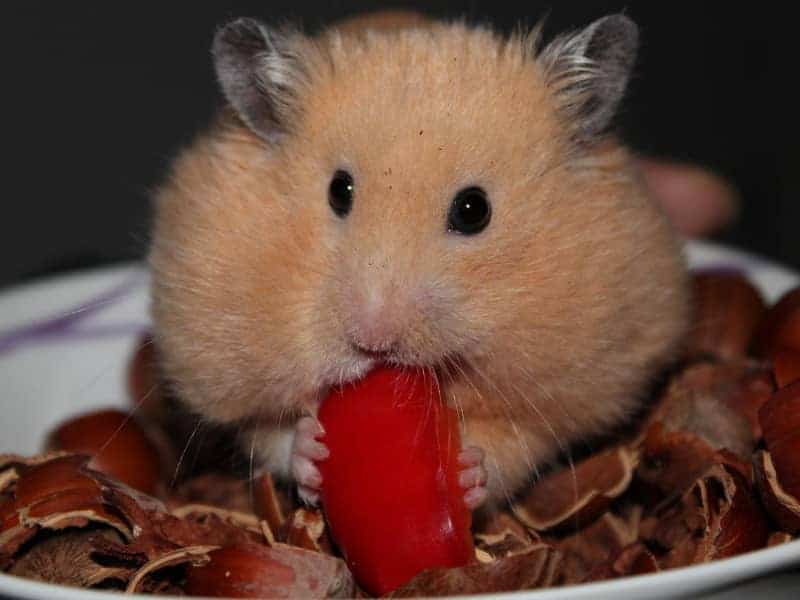
Hamster cheeks - problems and diseases
While hamster cheeks are usually a sign of a healthy and active animal, they can also be prone to various health problems. It's important to be aware of these to ensure your hamster's well-being.
Inflammations and abscesses
Unfortunately, inflammations and abscesses in the cheek pouches are not uncommon. They can be caused by various factors, such as sharp or pointed parts of food that injure the mucosa. Poor hygiene can also lead to infections.
A first sign of inflammation may be that the hamster no longer empties its jaws properly or it has difficulty eating. A visit to the vet is essential in such cases to determine the exact cause and initiate appropriate treatment.
Overstretching of the cheek pouches
It may sound surprising, but hamsters can also over-expand their cheek pouches. This usually happens when they try to store too much food at once. Overstretching can cause tears in the mucosa and lead to further complications.
If you notice that your hamster's jaws are unnaturally large and he has difficulty emptying them, you should urgently consult a veterinarian. Early treatment can prevent serious health problems.
Conclusion: Hamster cheeks
We've taken a journey through the fascinating world of hamster cheeks in this blog post. From their unique anatomy to the many functions of these little wonder bags of nature, it's a topic that should interest every hamster owner.
Summary of the main points
Hamster cheeks are much more than just cute appendages. They play a central role in the hamster's anatomy and survival instincts. From food storage to communication to survival strategy, the cheek pouches are a fascinating and complex part of hamster life.
Recommendations for hamster owners
If you own a hamster or are planning to get one, it is essential to familiarize yourself with the specifics and potential health risks of hamster cheeks. Pay attention to diet, observe your hamster's behavior, and don't hesitate to see a veterinarian if you notice any signs of trouble.
Author

-
Garden animal - A life with nature
Welcome to my animal blog! My name is Dirk and I am happy to take you on my journey through the fascinating world of animals and gardening.
Born 54 years ago, I have had an insatiable curiosity for the animal world around me since childhood. Although I have moved professionally in other industries, my true passion has always been animals and nature. It is remarkable how a small garden has become such an important part of my life.
Many of my fondest memories are associated with the animals that share our home. Whether it's the curious squirrels that scurry across the trees in the morning, the colorful variety of birds that visit our feeders, or the busy bees and butterflies that pollinate our flowers, every moment with them is invaluable to me.
This blog is my contribution to share my experiences, discoveries and insights with like-minded people. Here I will share stories of unforgettable encounters with animals, give tips on gardening and creating wildlife-friendly habitats, and take you on my journeys through nature.
Thank you so much for being here!
Cordial,
Dirk aka garden animal
Last posts
- 27. February 2024PetsVeganes Hundefutter – Grün und Gesund?
- 18. January 2024ChickensOregano für Hühner
- November 27, 2023HamsterDiurnal hamsters
- November 24, 2023HamsterHamster hammock

